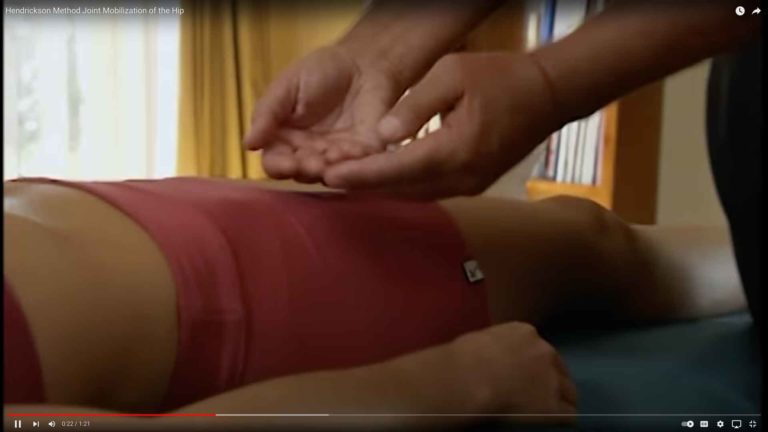Scar tissue that forms around a growing pancreatic tumor called a pancreatic ductal adenocarcinoma harbors valuable clues as to how long people with these cancers are likely to live, according to a new study led by researchers at Stanford Medicine
The architecture and organization of cells in the scar tissue can be used to categorize patients into two groups. Members of one group lived a median of nearly two years longer than members of the other group—a substantial difference for a cancer with a five-year survival rate after surgery of only 20% to 25%.
In fact, the researchers found that the patterns of a patient’s scar tissue are among the most predictive prognostic elements for this type of cancer—second only to the stage of the tumor at diagnosis.
The finding suggests that cells in the scar tissue, as well as its overall structure, interact with the cancer cells to either egg on or tamp down their growth. Drugs that intercept pro-growth messages, or mimic cellular conversations that discourage growth, may lead to new avenues of therapy.
“Our study puts new therapeutic approaches on the table,” said professor of surgery Michael Longaker, MD. “Should we be treating not just the tumor but also the scar tissue? I would say yes. Both obviously play a role in patient outcome.”
Longaker, the Deane P. and Louise Mitchell Professor in the School of Medicine, is the senior author of the study, which was published in the Nov. 21 issue of Cell Reports Medicine. Post-doctoral scholar Jason Guo, Ph.D., and former graduate student Shamik Mascharak, MD, Ph.D., are the lead authors of the research.
Deaths increasing
Deaths from pancreatic ductal adenocarcinoma, the most common type of pancreatic cancer, are rising, and it is projected to be the second leading cause of cancer deaths in the next 10 years. Because the disease metastasizes, or invades other parts of the body, early and quickly, it often recurs within two years of initial treatment.
Pancreatic ductal adenocarcinoma sparks a particularly strong response by cells called fibroblasts found in the connective tissue surrounding the pancreas. The fibroblasts secrete collagen and other components of what’s known as the extracellular matrix to bind the tumor in a web of cancer-associated scar tissue called desmoplasia. Earlier research has hinted that this scar tissue affects patient prognosis, but the analyses were confined primarily to simple quantitative measurements.
“Previous studies have focused on the cancer cells themselves, or how much fibrosis, or scarring, surrounds the tumor,” Guo said. “But our findings reveal that maybe the critical information comes not from the quantity or mass of the scar tissue, but from its internal components and organization.”
Guo and his colleagues studied hundreds of samples of pancreatic ductal adenocarcinoma tissue collected during surgery to remove the cancerous portion of the pancreas—a standard treatment for the condition. They used a computer algorithm to identify and analyze nearly 300 distinct attributes of the desmoplasia, including the length, width, alignment and density of their fibers, and another technique called CODEX to assess the prevalence and location of immune and other types of cells in the desmoplasia.
The results effectively allowed the researchers to zoom in to get a cell’s-eye view of who’s rubbing shoulders with whom (and how tightly they are pressed together) versus others exchanging friendly waves across a crowded room. They were particularly interested in investigating the interactions between immune cells called B and T cells and specialized cancer-associated fibroblasts that promote inflammation.
Survival patterns
The researchers then used a machine-learning approach to combine the data about multiple cellular interactions and fiber architecture with clinical information about each patient to uncover specific patterns associated with overall survival in the months and years after the initial diagnosis. They found that the presence of a specific type of T cell called a cytotoxic T cell was strongly associated with longer overall survival, while an abundance of tumor cells that modulate the immune system, as well as activated B cells, were associated with poorer survival.
“Pro-inflammatory fibroblasts also popped up in our analyses, which we were happy to see,” Guo said. “Knocking out these fibroblasts or inhibiting their activity is a potential target for new therapies. We also saw close relationships between B cells and these fibroblasts, which is interesting. What are they talking about? We’d love to follow up and see what cellular signals are being exchanged.”
They also found that thinner fibers predicted better survival than the beefy, densely packed fibers found in samples from patients who died soon after diagnosis.
When all the data were incorporated, the computers were able to categorize patients with pancreatic ductal carcinoma into two main groups. Patients in one group lived a median of 655 days longer than the other.
Longaker, Guo and their colleagues hope that new information about the contributions of the desmoplasia to pancreatic cancer growth will not just open doors for new therapies but that it will also be used to guide clinical decisions.
“In the future, I envision that a patient gets a biopsy before treatment has started, and doctors will look not just at the cancer but also at the patterns and types of cells in the desmoplasia,” Longaker said.
“This could also help doctors decide which patients are likely to need more aggressive therapy early in the course of their disease, and who could be spared invasive or harsh chemotherapy or radiation. I hope we can develop a chemotherapeutic approach that doesn’t just focus on the cancer but that also impacts fibroblasts and their role in promoting tumor growth.”
Provided by Stanford University
Not joined up yet?
There’s plenty of reasons to join the LCSP Register
Insurance Partners
Our dedicated team can tailor individual policies to suit your specific needs
Workshops
Keep your skills up to date with CPD Workshops and courses
Business Support
Advice tailored to working in the private sector
Find a Therapist
Our directory of therapists searchable by the general public
Welfare Officer
Supporting members who may have situations of difficulty where they need assistance, guidance or reassurance.






